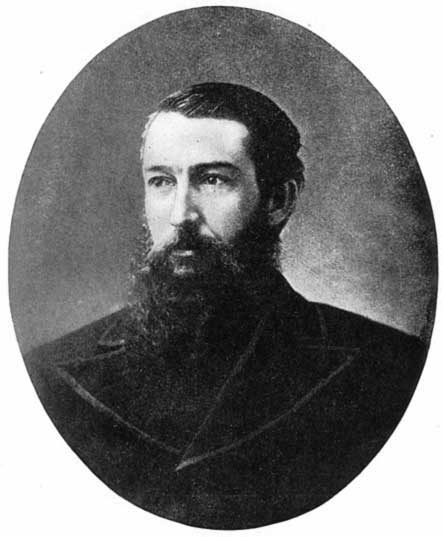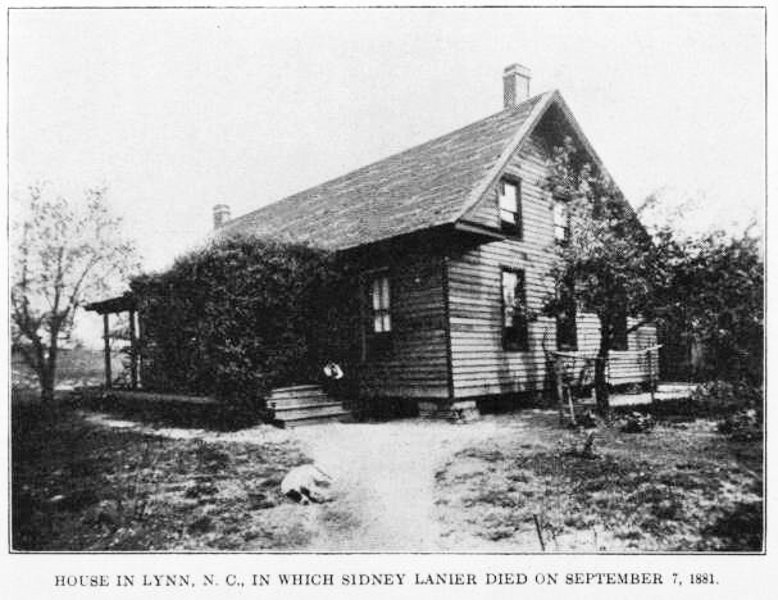
Sidney Clopton Lanier was born on February 3, 1842, in Macon, Georgia and developed an early love of music and the arts. Later on, he attended Oglethorpe University, which was then in nearby Milledgeville.
It was here that he was a member of the Sigma Alpha Epsilon fraternity, which was founded at the University of Alabama, and graduated first in his class. His studies came to a close upon the outbreak of the Civil War.
Lanier served in the Confederate signal corps in the Tidewater region of Virginia. In later years, he and his brother piloted blockade runners, the ships that would bring in cargo when the enemy had a blockade set up in a harbor.
During this time, he was captured and imprisoned at Point Lookout in coastal Maryland. He contracted tuberculosis here, which would affect him for the rest of his life.

Following the end of the war, he moved to Montgomery, Alabama and worked as a hotel clerk. He frequently drove to nearby Prattville to play the organ at a church and wrote his only novel, Tiger Lilies, in 1867. The semi-autographical book is set in Montvale Springs, near Knoxville, where Lanier’s grandfather owned a hotel.
The same year, he returned to Macon to work in his father’s law office and married Mary Day. The couple went on to have four children. Lanier continued to write, mostly poetry that used Southern dialects that he would become known for.
He traveled around the country in search of treatment for his tuberculosis, finding inspiration in many places. His work was published in magazines during this time including “The Song of the Chattahoochee” and “The Marshes of Glynn.”
In the later years of his life, Sidney Lanier became a professor of English literature at Johns Hopkins University in Baltimore. In 1881, Lanier died while visiting family in Lynn, North Carolina of complications related to his tuberculosis. He was 39 and was subsequently buried in Baltimore.
Sidney Lanier Landmarks
Sidney Lanier House, Macon, Georgia

Sidney Lanier’s parents were living in Griffin when they came to visit his father’s parents in Macon, where his mother subsequently gave birth to him.
The four-room Victorian home is now the Sidney Lanier Cottage museum with artifacts related to his life, including one of his flutes, portraits of Lanier, first editions of his work, and his wife’s wedding dress. Guided tours are offered on Fridays and Saturdays from 10 am to 4 pm, run by the Historic Macon Foundation.
Lanier Cottage, Lynn, North Carolina

Lanier’s short life ended in Lynn, North Carolina, south of Asheville, in a family cottage. The house is now privately owned but a historic marker on Highway 108 educates visitors on the writer’s life.
Additional Sites
Green Mount Cemetery, Baltimore, Maryland

Lanier was buried at Green Mount Cemetery in Baltimore, where his wife was later laid to rest alongside him. The historic cemetery was founded in 1838. Among the other notable people buried in the cemetery are philanthropist Johns Hopkins, presidential assassin John Wilkes Booth, and Betsy Patterson Bonaparte, sister-in-law of Napoleon.
Lanier Oak, Brunswick, Georgia

Lanier was inspired to write his most notable work, The Marshes of Glynn, in Brunswick, a city in coastal Georgia. Today the “Lanier Oak” is protected from Coastal Highway 17 and has a historic marker to its significance.
The Lanier Library, Tryon, North Carolina
Founded in 1889, a group of ladies in the small town of Tryon created a community library starting with two books donated by Lanier’s widow. It became The Lanier Library and now contains thousands of volumes and hosts author events and festivals.

Leave a Reply